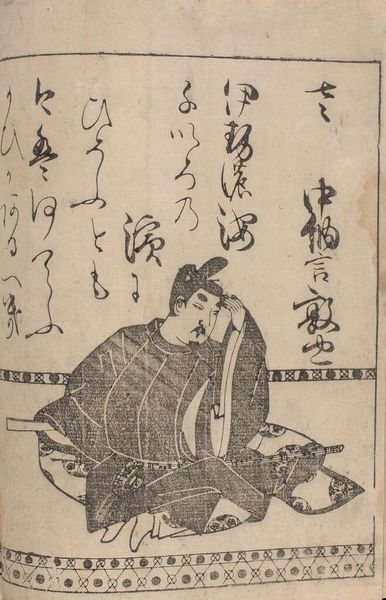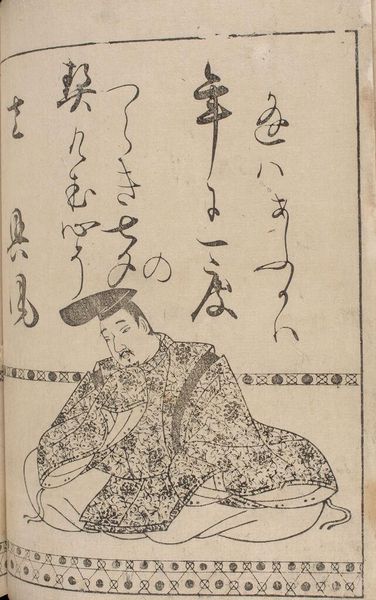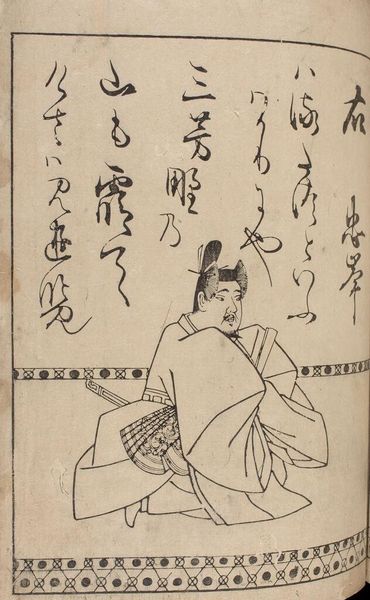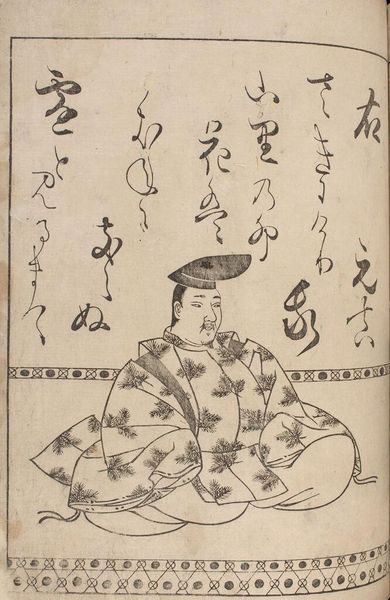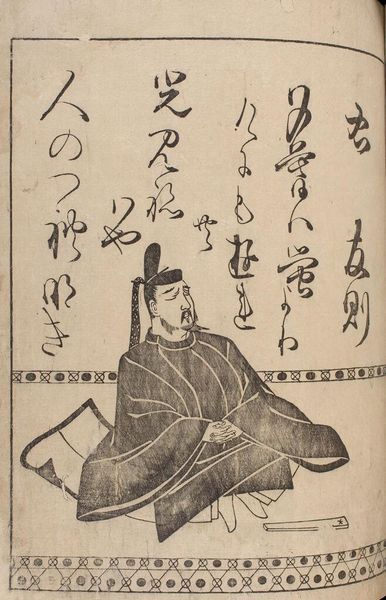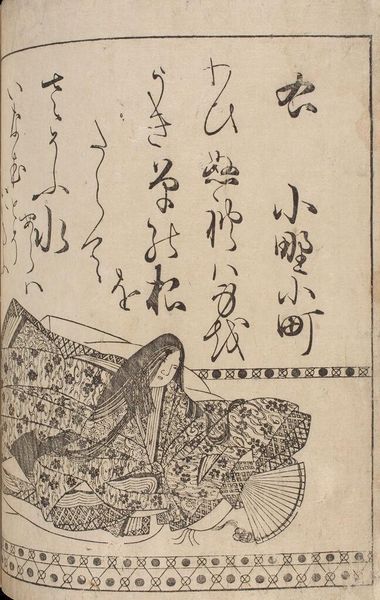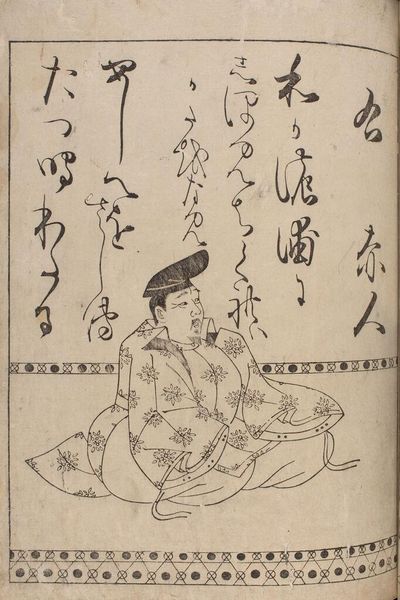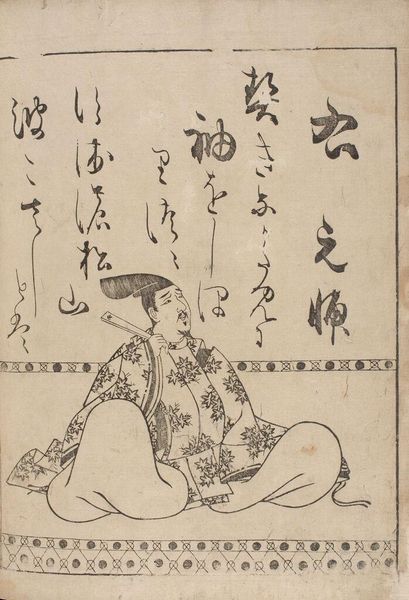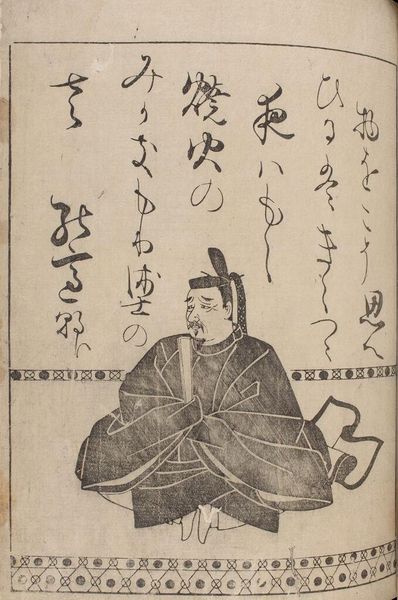
Poet Fujiwara no Toshiyuki from page 6A of the printed book of "Thirty-Six Immortal Poets" (SanjÅ«rokkasen), KÅetsu edition c. 1610
0:00
0:00
Dimensions: H. 34.5 cm x W. 24.1 cm (13 9/16 x 9 1/2 in.)
Copyright: CC0 1.0
Curator: Hon'ami Koetsu's depiction of "Poet Fujiwara no Toshiyuki," sourced from a printed book showcasing the Thirty-Six Immortal Poets, presents us with a small, intimate glimpse into literary history. Editor: It feels quite serene, almost melancholic. The lines are so delicate, but there's a certain weight in the poet's posture. The calligraphy adds to the sense of reflective contemplation. Curator: Indeed. Koetsu's calligraphy wasn’t just about transcription; it was about capturing the essence of the poet, Toshiyuki. Notice how the curves of the lines mirror the poet's flowing robes, creating a visual harmony. Editor: It’s interesting how social status is conveyed through this simplicity. The careful rendering of his garments speaks volumes about courtly life and its rituals. Curator: Absolutely. The image prompts questions about the role of poets in society, their connection to power, and how their legacy is preserved through art. I wonder, what would Toshiyuki think if he could see himself immortalized in this way? Editor: I think that as cultural preservation, this work inspires us to consider how we honor our history and the individuals who shaped it. Curator: Agreed. It's a potent reminder that art serves as a conduit between past and present, inviting us to engage in a dialogue across time.
Comments
No comments
Be the first to comment and join the conversation on the ultimate creative platform.




